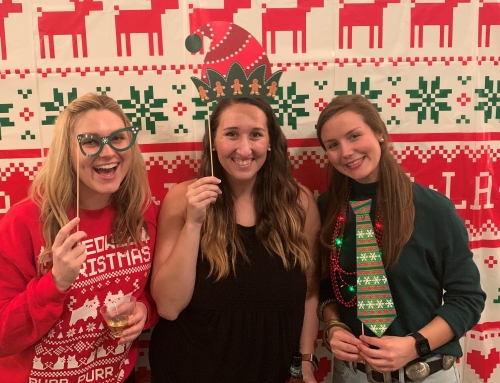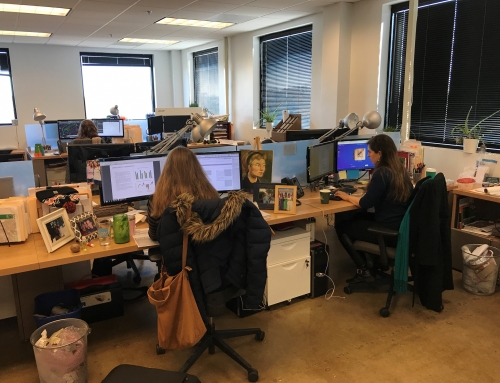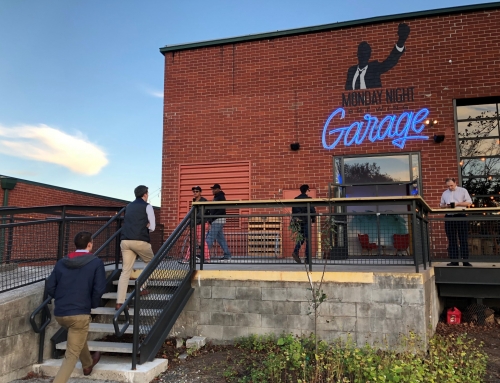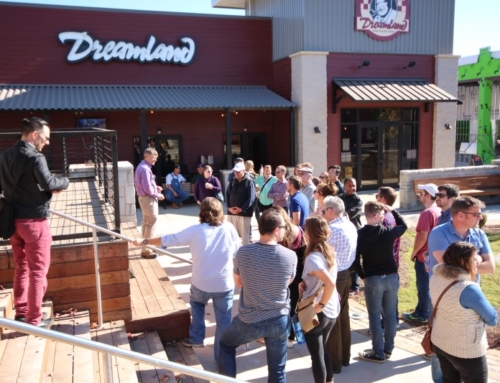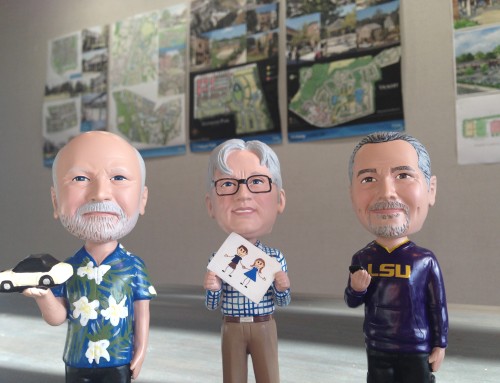Vickery Neighborhood Featured in AJC
Prominent Atlanta Journal-Constitution columnist Maria Saporta has penned an article about Vickery, a mixed-used neighborhood in Cumming, Georgia, designed by TSW. Saporta takes a look at the way the project has preserved trees, rather than following the usual clearcutting practices. (For more about Vickery, download these PDF project sheets: Overview, Village Center and Built Images).
Attention, developers: Saving trees means money
by Maria Saporta
Atlanta Journal-Constitution
Published on: 05/01/06Visiting the Vickery development in south Forsyth County can be a confusing experience.
On the one hand, the development appears to be brand-spanking-new, which is true. The community, which eventually will total 600 residences with office and retail space, began in 2003.
On the other hand, the development feels as though it’s been there awhile, playing off many of the smart-growth principles that resemble a more historic town community.
But one major feature that gives the Vickery community a lived-in feeling is its trees and green space.
Riding around in a golf cart, developer Pam Sessions points to trees deliberately saved by readjusting site plans for houses and roads. Huge swaths of mature forests were preserved for the several parks sprinkled throughout the 214-acre development.
Even more dramatic is that Sessions and her company, Hedgewood Properties, embarked on a major transplanting program. Trees that couldn’t remain in place were dug up, stored and then transplanted to other areas in the development.
“All the trees make such a big difference,” Sessions says. “They make it feel like the community is established.”
And saving the trees by transplanting them has ended up saving her money.
To date, Hedgewood has transplanted 44 trees on the site. They’ve ranged in diameter from six to 15 inches and include oak, birch, cherry, magnolia, hemlock and maple.
The company has spent about $20,000 saving the 44 trees, whereas installing trees of that size would have cost at least $139,000. And that bottom line doesn’t include the aesthetic value the trees have brought to the development.
“Building great neighborhoods is profitable,” says Sessions, one of the “greenest” developers in metro Atlanta. “When more developers realize that, we all will be better off.”
Saving trees is a constant battle in the Atlanta region, which has seen subdivision after subdivision cut down every tree.
That practice has been repeated over and over because many developers don’t want to work around trees during construction. So they end up with stark communities that have limited visual appeal because there are no trees or green space.
But it doesn’t have to be that way.
Clay Scott, sales manager for the Houston-based company Environmental Design, specializes in transplanting trees. The company has equipment that can transplant trees up to two feet in diameter and historic trees that can be more than 100 years old.
“Trees have a monetary value,” Scott says. But developers often don’t realize how they can enhance their projects by saving trees, he says. “We see it all the time: A developer comes in and clear-cuts.”
Sometimes, good solutions can be found. Last year, when Cousins Properties was preparing the Buckhead site for its Terminus project, it paid for the relocation of 75 mature trees to be planted in Chastain Park.
But it came as a surprise a few weeks ago when a couple of dozen mature street trees were cut down along the public right of way at the intersection of Peachtree and Piedmont roads. The trees were removed to make way for a new, more pedestrian-friendly street design for Buckhead.
“The roadside trees were not saved, but the good news is that a uniform, shaded boulevard along Peachtree will become a reality,” says Scotty Greene, president of the Buckhead Community Improvement District. “The transplant option was considered, but it just wasn’t practical with our budget constraints.”
While those trees were removed, Greene says it will lead to a nicer design, with 186 new willow oaks within a 1.5-mile corridor, along with wider sidewalks, a landscaped median and bicycle paths.
In Midtown, a wonderfully shaded parking lot at 14th and West Peachtree streets is about to be redeveloped into a 59-story hotel, office and residential tower with retail on the ground floor.
That means that the 50-plus trees on the site must go. All have that ominous fluorescent orange “X” saying that their days are numbered.
Jim Borders, president of the Novare Group, which is co-developing the project with Pope & Land, is sorry the trees must go. And, although they already have approval to cut down the trees, he’s in no rush.
“We would be willing to cooperate with anyone who wants to plant those trees on their property,” says Borders, who says construction probably will start later this year. “We would be amenable to having the trees relocated.”
A great spot for those trees would be the Atlantic Station development, which is an amazing urban success except for its lack of mature trees and its limited green space.
Of course, transplanting trees in an urban environment presents certain challenges, especially when power lines are in the way. But the potential advantages certainly outweigh the challenges.
Most importantly, it’s going to take changing the mind-set of the developers who are transforming our region to realize the value of green.
Trees can be saved. Trees can be transplanted. By doing both, developers can add to the bottom line of their projects. But most importantly, they can contribute to the environmental and aesthetic quality of metro Atlanta.

